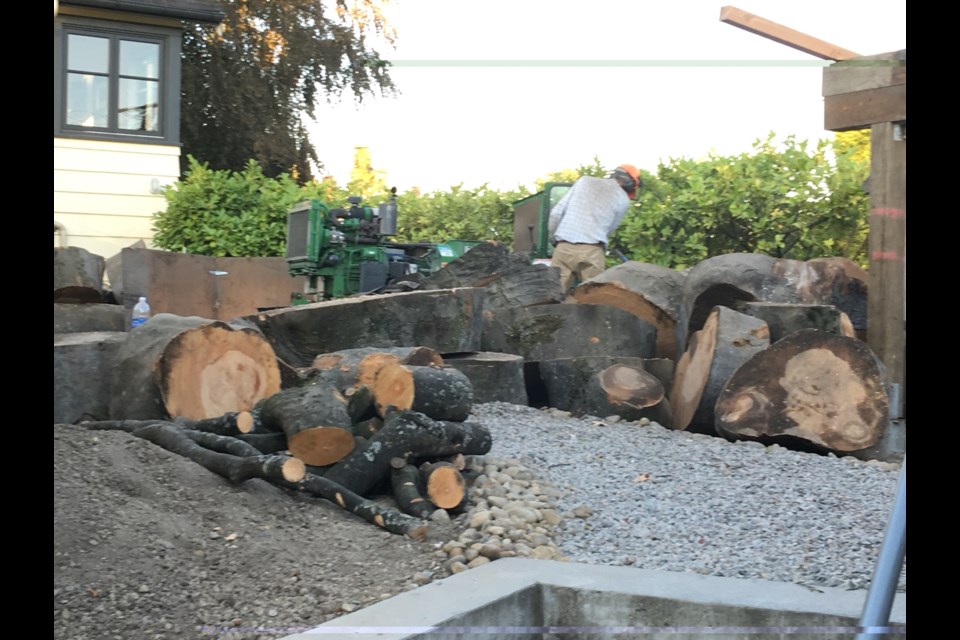A landmark that harkens back to New Westminster’s early days is no longer standing tall in the Brow of the Hill.
The city’s decision to allow a massive beech tree at the rear of an Ash Street residence to be cut down has devastated some area residents.
“We have had a number of inquiries from people who are querying whether a permit was actually applied for and issued. This was all done on the up and up,” said Dean Gibson, the city’s director of parks and recreation. “Certainly for people that live in that particular neighbourhood, it’s a fairly marked change for them. The tree bylaw is there to protect trees that otherwise can be saved and are in good health. In this particular case, it was not to be for this tree.”
Gibson said homeowners who apply to cut down a tree can either hire an arborist to do an assessment or provide the city with photographs of the tree and get the city’s arborist to inspect the tree. In this case, the city arborist said it was readily apparent the tree was in a state of declining health and unlikely to recover.
“For people who feel strongly about trees, that may or may not have felt like enough,” Gibson said, “but in this particular case, from a professional arborist’s perspective, who is trained in tree risk assessment and things such as this, there wasn’t any question as to the condition of this particular tree.”
The Record has received calls and emails from area residents voicing concerns about the tree cutting, noting the cuttings seem to indicate the tree was healthy.
“It was basically a sick tree that didn’t show any signs that it was going to be getting any better,” Gibson said. “They wanted to take the tree out because it was sick and presenting a risk. It is similar to one in the front yard. Should a branch come off of that tree, that could cause substantial damage to home and adjacent properties.”
Two beech trees on the property became the first trees listed on the city’s heritage register in 2010.
A 2010 staff report stated the trees had heritage value because of their age – they were planted sometime between 1860 and 1880, their size, their landmark status in the Brow of the Hill neighbourhood and their connection to an important New Westminster family. The property was part of the Cunningham estate, a property owned by the family that started the Cunningham Hardware Company.
In January, the city adopted a new tree protection and regulation bylaw that describes the situations where trees are allowed to be cut down, including hazardous trees, trees whose roots are interfering or posing hazards to the operation of sewers, drains and other infrastructure, or are within the footprint of a proposed building or structure.
The tree was classified as a specimen tree because it was a large and mature tree with a DBH (diameter breast height) of more than 60 centimetres.
“The requirement for that is that they replant with at least one tree and either provide security in the amount of $500, which is held by the city for a year to ensure it is planted properly and has a fighting chance at survival, or if they elected not to plant any trees at all on their site, they could provide $500 cash in lieu. That money goes into a fund which the city uses for planting trees elsewhere in the city,” Gibson said. “It is our understanding that the property owner will be planting at least one tree back in their yard.”
If a property owner wants to remove a non-hazardous specimen tree, the security or cash-in-lieu fee jumps to $10,000.



